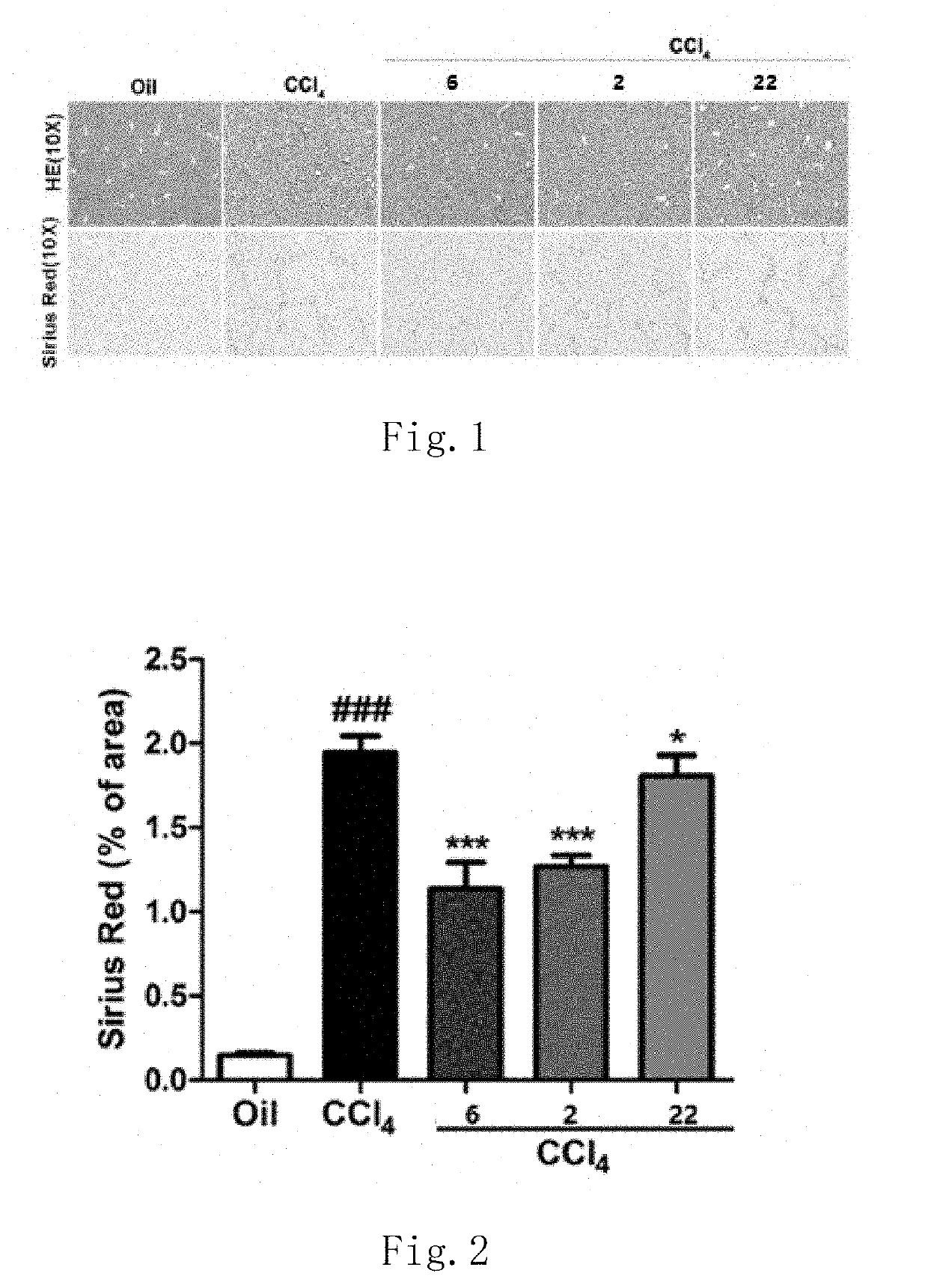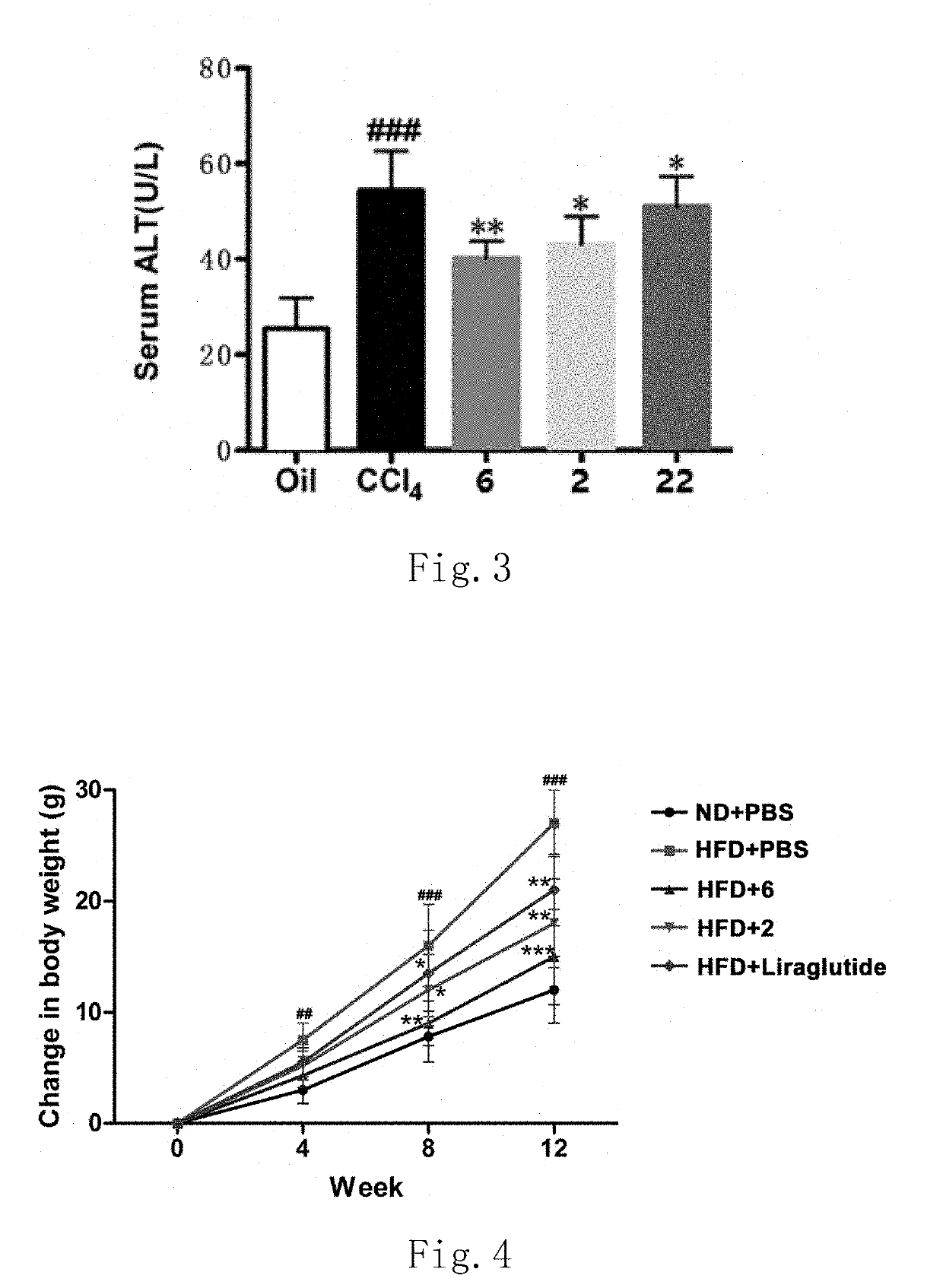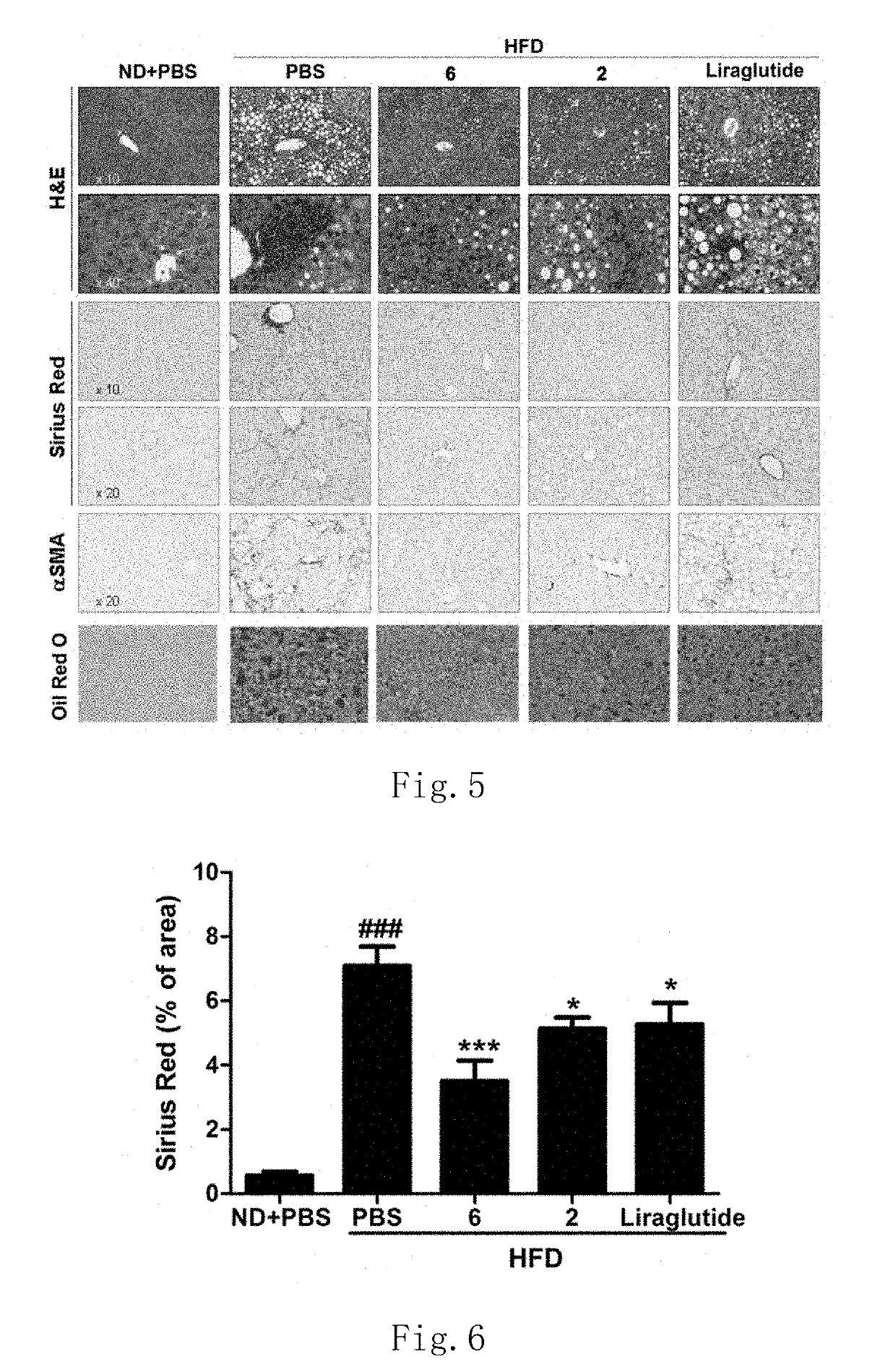Glp-1r/gcgr dual target agonist polypeptide for treatment of fatty liver diseases, hyperlipemia and arteriosclerosis
- Summary
- Abstract
- Description
- Claims
- Application Information
AI Technical Summary
Benefits of technology
Problems solved by technology
Method used
Image
Examples
example 1
Synthesis of Polypeptide Compound
Materials:
[0110]All amino acids were purchased from NovaBiochem Company. Unless otherwise specified, all other reagents were analytically pure and purchased from Sigma Company. Protein Technologies PRELUDE 6-channel polypeptide synthesizer was used. Phenomenex Luna C18 preparative column (46 mm×250 mm) was used for purification of the polypeptides. High performance liquid chromatograph was manufactured by Waters Company. MS analysis was determined using Agilent mass spectrometer.
Synthetic method of polypeptide compounds of the invention is illustrated by taking the polypeptide compound 6 as an example:
Structure Sequence:
[0111]His-(D-Ser)-Gln-Gly-Thr-Phe-Thr-Ser-Asp-Tyr-Ser-Lys-Tyr-Leu-Asp-Lys(PEG2-PEG2-γGlu-CO(CH2)14CH3)-Arg-Arg-Ala-Gln-Asp-Phe-Val-Gln-Trp-Leu-Met-As n-Thr-Gly-Gly-Pro-Ser-Ser-Gly-Ala-Pro-Pro-Pro-Ser-NH2
[0112]a) Main peptide chain assembly:
[0113]The following polypeptide in a scale of 0.25 mmol was synthesized on a CS336X peptide syn...
example 2
In Vitro Inhibition Effect of GLP-1R / GCGR Dual Target Agonist Polypeptides on Hepatic Fibrosis
[0135]Hepatic stellate cell strain LX-2 was selected to study and observe the effect of different doses of test substances on the expression of LX-2 cell activation marker ζ-SMA.
[0136]Hepatic stellate cell LX-2 was laid on 35 mm cell culture plate, cultured with DMEM (high glucose)+10% FB S+1% double-antibody culture medium (Thermo Fisher), placed overnight when the cells grew to 70% convergence at 37° C. and under the condition of 5% CO2, and treated with the above compounds 1-37 (dissolved in PBS) for 48 hours the next day morning to extract cell protein, carry out Western Blot, and take β-actin as internal reference and analyze the expression quantities of α-SMA and β-actin by a gray level of Image J 1.50i. PBS with the same volume as that in experimental group was added in negative control.
[0137]0.1 μM, 1 μM and 5 μM of compounds 2, 5, 16 and 19 were treated, and could be able to reduce...
example 3
Functions of GLP-1R / GCGR Dual Target Agonist Polypeptides to Improve and Treat CCI4-Induced Hepatic Fibrosis in Mice
[0140]6-8-week-old C57 mice with body weight of 20-25 g at SPF level were provided by Guangdong Medical Laboratory Animal Center and tested by SPF level laboratory in Laboratory Animal Center of Guangdong Pharmaceutical University. C57 mice were divided into control group, hepatic fibrosis model group and treatment group, 8 mice for each group. A mouse was subject to intraperitoneal injection with 20% CCl4 (2 mL / kg, diluted with olive oil at ratio of 1:4) twice a week for continuous 6 weeks to form a stable hepatic fibrosis animal model. For the treatment group, one of subcutaneous injection compounds 2, 6 and 22 with 500 μg / kg of body weight was used respectively once every two days for continuous 6 weeks. Olive oil with same volume and same frequency was administered for the control group and stopped until the end of 6-week experiment. After the end of the experiment...
PUM
| Property | Measurement | Unit |
|---|---|---|
| Molar density | aaaaa | aaaaa |
| Molar density | aaaaa | aaaaa |
| Molar density | aaaaa | aaaaa |
Abstract
Description
Claims
Application Information
 Login to View More
Login to View More - R&D
- Intellectual Property
- Life Sciences
- Materials
- Tech Scout
- Unparalleled Data Quality
- Higher Quality Content
- 60% Fewer Hallucinations
Browse by: Latest US Patents, China's latest patents, Technical Efficacy Thesaurus, Application Domain, Technology Topic, Popular Technical Reports.
© 2025 PatSnap. All rights reserved.Legal|Privacy policy|Modern Slavery Act Transparency Statement|Sitemap|About US| Contact US: help@patsnap.com



